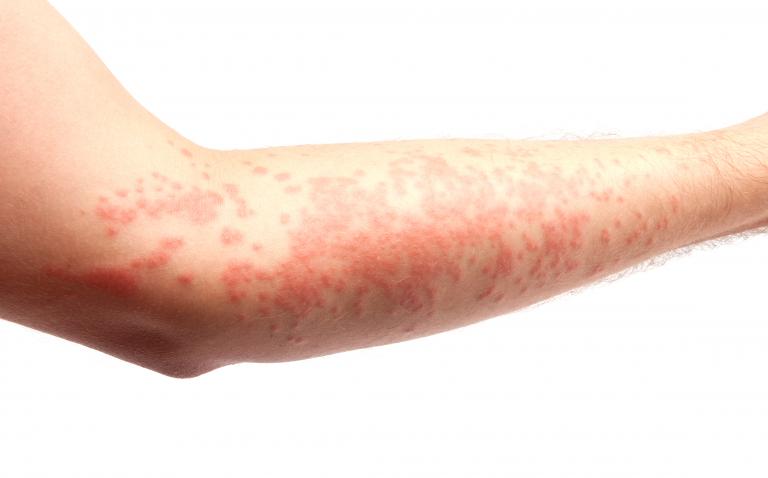Urticaria is a clinical condition characterised by the presence of skin lesions, called wheals. Typically, these are intensely itchy and surrounded by an area of erythema. Wheals can have a diameter from a few millimetres or appear as confluent lesions with a diameter of several centimetres. In some cases, urticaria is associated with angioedema, which appears as a swelling of soft tissues from fluid accumulation due to dermal oedema.
The so-called ‘Urticaria-Angioedema Syndrome’ is a frequent condition in the general population. It is estimated that 15-20% of subjects presented at least one episode of the syndrome in life. The frequency in paediatric patients is not easy to assess but it is likely that it may be between 4.5 and 7.5% with an average age of onset which is in the years immediately preceding school age. Both sexes seem equally interested.
Classification of urticaria
The main criterion for the purposes of the classification of urticaria is duration: acute urticaria endures for less than 6 weeks, and chronic forms endure for 6 weeks or more. In chronic cases, the symptoms are present daily or nearly so and consist of itchy wheals that individually last less than 24 hours. Chronic urticaria is associated with angioedema in approximately 50% of cases and its frequency in paediatric age is very uncertain; its prognosis seems better in children, tending to heal within 2-3 years as opposed to an average duration of 3-5 years in the adult.
Diagnosis of urticaria
The diagnosis concerning the causes of urticaria is very challenging, because very many physiological or pathological conditions can be associated with the appearance of hives.
In cases of acute urticaria, with remission within the 6-week timeframe, no particular diagnostic tests are advised (unless an allergic cause is suspected), as this condition is usually related to transient infectious episodes (mostly viral) and self-remitting.
In cases of chronic urticaria, with duration of 6 weeks or more, an allergologic/dermatologic evaluation is advised. In any case, the 6-week time limit must in any case be considered indicative and not binding for the purposes of deciding whether or not to carry out diagnostic tests: this decision must always be based on clinical and anamnestic criteria.
The therapy, if the underlying cause is not detectable and/or treatable, is essentially based on the use of anti-histamines. Even a diet poor in histamine-liberating foods and food additives can sometimes help reduce skin manifestations.
An allergic reaction (to foods, drugs, hymenoptera venom or other allergic trigger) can be the cause of an acute urticaria, that will develop shortly (usually within 1 hour) from allergen exposure. By contrast, an allergic reaction is not frequently associated with chronic urticaria.









